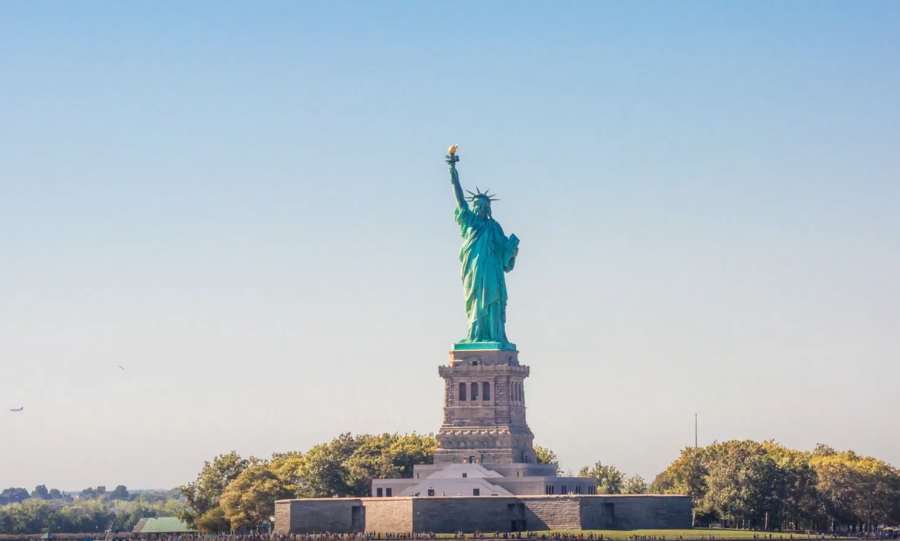Civil liberties and civil rights are fundamental concepts in American law and governance.
Although they are often confused, these concepts serve distinct roles in protecting individuals and ensuring equality.
Civil liberties are about protecting personal freedoms from government overreach, while civil rights focus on ensuring equal treatment under the law.
Let us see how different they are.
Table of Contents
ToggleCivil Liberties
Civil liberties refer to the fundamental freedoms guaranteed by the Constitution, specifically outlined in the Bill of Rights, and interpreted by the courts.
These liberties are essential for the protection of individual freedoms against government actions that may infringe upon these rights.
1. Freedom of Speech (First Amendment)
The First Amendment protects the freedom of speech, allowing individuals to express themselves without fear of government interference or censorship.
It encompasses not only spoken and written words but also symbolic speech, such as protests and artistic expression.
Landmark cases like Tinker v. Des Moines Independent Community School District established that students do not lose their free speech at school, provided their expression does not disrupt the educational process.
2. Right to Bear Arms (Second Amendment)
The Second Amendment ensures the right of individuals to own and carry weapons. This liberty is often debated in the context of public safety and regulation.
In District of Columbia v. Heller, the Supreme Court affirmed an individual’s entitlement to possess a firearm unconnected with service in a militia and to use it for traditionally lawful purposes, such as self-defense within the home.
The decision underscored the personal nature of this civil liberty while leaving room for reasonable regulations.
3. Protection Against Unreasonable Searches (Fourth Amendment)
The Fourth Amendment safeguards individuals from arbitrary or unjustified government searches and seizures.
It requires law enforcement to obtain a warrant, supported by probable cause, before conducting most searches.
Mapp v. Ohio extended this protection by ruling that evidence obtained in violation of the Fourth Amendment cannot be used in state courts, reinforcing the necessity of adhering to constitutional procedures.
4. Right to Remain Silent (Fifth Amendment)
The Fifth Amendment protects individuals from self-incrimination, ensuring that they cannot be compelled to testify against themselves during legal proceedings.
It is central to the Miranda warnings, established in Miranda v. Arizona, which require police to inform suspects of their rights, including the right to remain silent and the right to an attorney, during custodial interrogations.
The protection ensures that confessions are made voluntarily and not coerced.
5. Right to a Fair Trial (Sixth Amendment)
The Sixth Amendment guarantees the entitlement to a fair and speedy trial by an impartial jury.
It includes the rights to be informed of the charges, to confront and cross-examine witnesses, to have a compulsory process for obtaining witnesses, and to have the assistance of counsel for defense.
In Gideon v. Wainwright, the Supreme Court ruled that the state must provide an attorney to defendants who cannot afford one, ensuring the right to a fair trial is upheld regardless of economic status.
6. Right to Vote (Fifteenth Amendment)

The Fifteenth Amendment guarantees that no citizen is denied the right to vote based on race, color, or previous condition of servitude.
An amendment was pivotal during the Reconstruction era and remains crucial in the protection of voting.
The Act of 1965 further reinforced this amendment by prohibiting racial discrimination in voting, illustrating the ongoing efforts to ensure equal access to the electoral process.
7. Freedom of Religion
Freedom of religion ensures individuals can practice any religion or none at all, without government influence or interference.
The First Amendment’s Establishment Clause and Free Exercise Clause collectively protect this liberty.
In Engel v. Vitale, the Supreme Court ruled that official school prayers violated the Establishment Clause, underscoring the separation of church and state.
Conversely, the Free Exercise Clause was upheld in Wisconsin v. Yoder, where the Court ruled that Amish parents could withdraw their children from public schools for religious reasons.
8. Right to Privacy
The right to privacy protects individuals from unwarranted government intrusion into their personal and private affairs. It derives from several amendments, creating a “penumbra” of privacy.
In Griswold v. Connecticut, the Supreme Court recognized a constitutional entitlement to privacy in marital relations, which later formed the basis for decisions such as Roe v. Wade, establishing a woman’s entitlement to choose an abortion.
The primary purpose of civil liberties is to protect individuals from government overreach and ensure that personal freedoms are upheld.
Civil Rights
Civil rights, on the other hand, refer to the legal protections against discrimination based on certain characteristics such as:
These rights ensure that all individuals receive equal treatment under the law and are protected from discrimination by both private entities and the government.
Examples include:
Legislation prohibits discrimination based on: Law was enacted to overcome legal barriers that prevented African Americans from exercising their right to vote. Act prohibits discrimination against individuals with disabilities in all areas of public life.Act of 1964
Act of 1965
Act of 1990
The purpose of civil rights is to ensure equal treatment and opportunities for all individuals, thereby protecting them from discriminatory practices.
Civil Rights Litigation Group
The Civil Rights Litigation Group plays a crucial role in the ongoing effort to protect both civil liberties and rights.
Historically, civil liberties and rights have been expanded through a combination of legislation and court rulings.
For instance, significant legal actions have resulted in landmark decisions and laws that have broadened the scope of both concepts, thereby enhancing the protections available to marginalized groups.
The litigation group highlights the importance of legal action in addressing violations and securing rights.
Legal cases brought before the courts can set precedents that impact future interpretations and applications.
For example, the Supreme Court’s decision in Brown v. Board of Education ended racial segregation in public schools, a monumental step forward in the fight for civil rights.
Furthermore, the group works tirelessly to address new and emerging issues. As societal norms and values evolve, so too do the challenges in maintaining and protecting these rights.
Continuous legal efforts are essential in ensuring that all individuals, regardless of their background, have their rights upheld and protected against infringement.
Similarities
Both civil liberties and civil rights are essential for protecting individual freedoms and ensuring justice within society.
They are deeply rooted in the Constitution and are further defined by subsequent legislation and court rulings.
Both sets of rights require active legal enforcement to be effective, relying on the judicial system to interpret and uphold them.
Civil rights and liberties share the common goal of safeguarding individual freedoms.
Civil rights, meanwhile, focus on ensuring that individuals are treated equally under the law, free from discrimination based on inherent characteristics.
Liberties protect individuals from government overreach, ensuring that personal freedoms such as speech, privacy, and due process are maintained. Numerous organizations fight for them.
Both types of rights have evolved over time through landmark legal cases and legislative efforts.
Differences
Despite their similarities, civil liberties and rights differ significantly in their scope, enforcement, and application.
Scope:
Liberties
Rights
Enforcement
Liberties
Rights
Application
Liberties
Rights
The Bottom Line
While civil liberties and civil rights both play crucial roles in safeguarding individual freedoms and ensuring justice, they do so in different ways.
Civil liberties protect personal freedoms from government overreach, while civil rights ensure equal treatment and protection against discrimination.
Both require active legal enforcement and have evolved through significant legal and legislative milestones.
References
- The Bill of Rights: A Transcription
- Facts and Case Summary – Tinker v. Des Moines
- District of Columbia v. Heller, 554 U.S. 570 (2008)
- Constitution of the United States
- Miranda v. Arizona (1966)
- Voting Rights Act of 1965
- Wisconsin v. Yoder
- Roe v. Wade Overturned: How the Supreme Court Let Politicians Outlaw Abortion
- Americans with Disabilities Act of 1990, As Amended
- Brown v. Board of Education
Related Posts:
- 10 Iconic Moments in America’s Fight for Civil Liberties
- Shoplifting in 2025 - Data, Trends, and Analysis
- How Do Civil Rights Movements Continue to Shape…
- 9 Must-Watch Civil Rights Movies for Historical Insight
- What Are the Main Goals of the Human and Civil…
- Top 11 Civil Rights Organisations Promoting Equality








